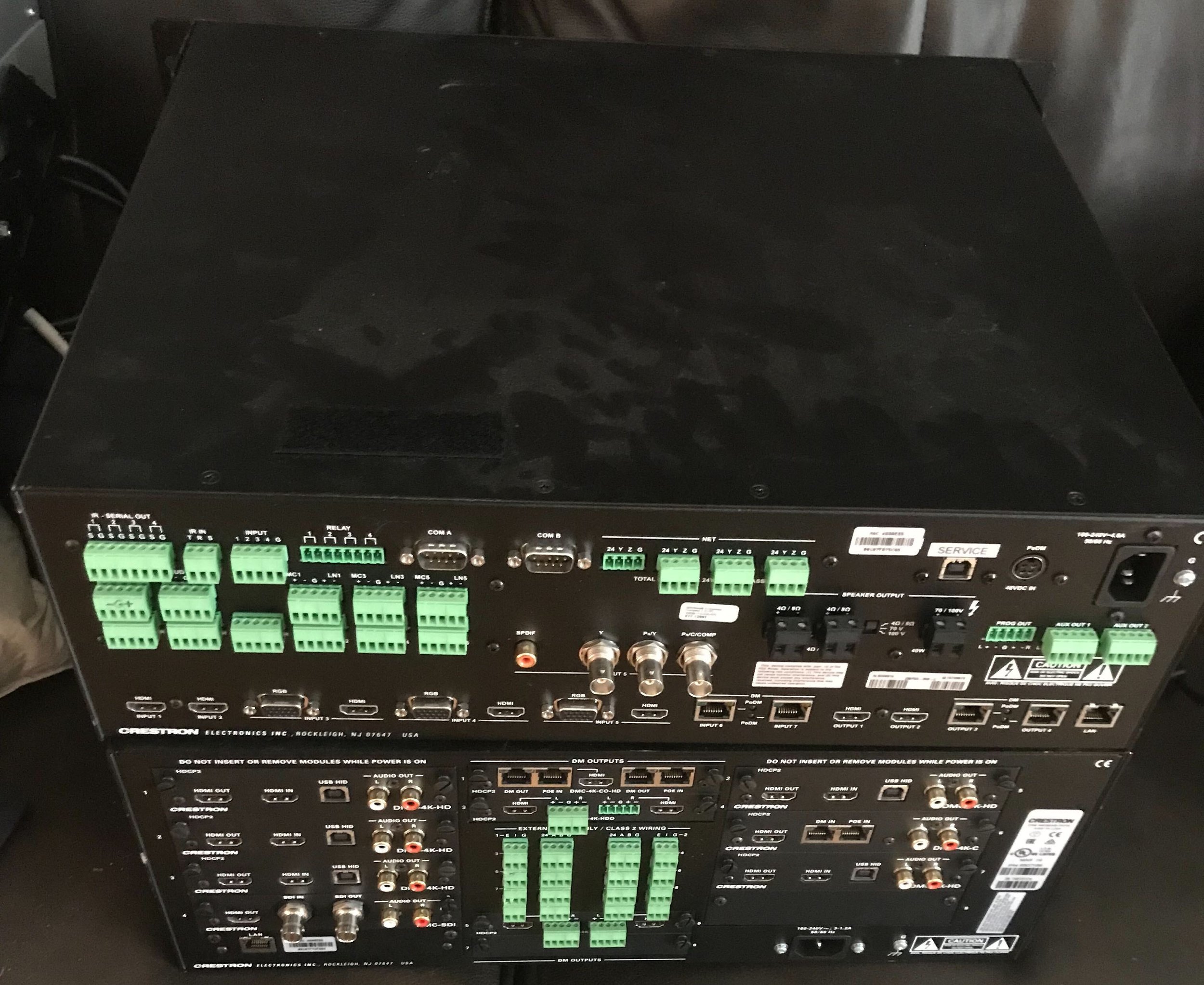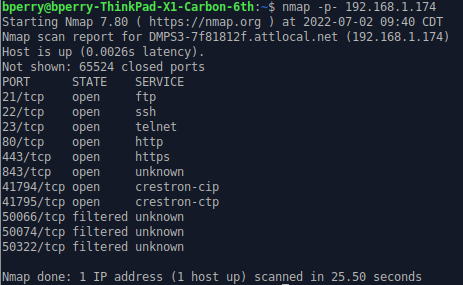In the past, I’ve come across Crestron devices on corporate networks. They are enterprise appliances for handling and automating audio/visual data and peripherals. Think conferencing or display automation. With default or weak credentials, the appliances can be accessed over several ports including FTP, Telnet, SSH, and others.
I acquired several current-gen Crestron 3-series devices through an auction at my local university. They were upgrading their gear and getting rid of what they had that was out of warranty, even if it was still perfectly good.

I soon realized, though, that they are little more than sophisticated input switchers if you also don’t have Crestron Toolbox. This limitation in the enterprise-grade Crestron devices is a common problem. I started searching on how to actually use the devices after getting them home and quickly found Reddit and other posts opining the same issue. The devices were expensive manual switchers without Crestron Toolbox.
Crestron Toolbox and its ancillary Simpl framework and IDE enable Crestron administrators to develop applications to automate not only Crestron devices, but audio/visual devices by other manufacturers as well. Crestron Toolbox and Simpl installers are very hard to get a hold of if you are not a Crestron vendor, and it is held closely with an NDA.
The Simpl IDE created by Crestron allows an administrator to develop applications visually without code for particular Crestron devices. If you are feeling brave though, you can also begin writing modules of re-usable functions in a language called Simpl+. Simpl+ gets converted into C# and compiled into a sandbox. This sandbox is effectively a set of methods exposed to Simpl+ that Crestron controls fully for file system or other access.
Simpl applications are signed using a special Crestron certificate. This prevents an arbitrary application from being loaded onto the devices. The code must have been compiled by the Simpl IDE in order to be run on the devices.
By default, command prompt access to Crestron devices is sandboxed. Even as an administrator, you do not have full file system access. My 3-Series devices were running Windows CE 7.0 with .NET Compact Framework 3.5. With authentication disabled, the default credentials are crestron:<blank>. I’m not much of a hardware person so I made no attempt to open up the devices. I wanted to do purely remote research. I started with nmap.

After logging into Telnet and SSH and looking around the exposed file system (while also navigating Crestron PDFs), I decided to focus on the Simpl applications. Simpl applications have a lpz extension and are just zip files.

Attempting to replace specific executables within the lpz file didn’t work, but I’m not sure this is still a dead end. I attempted this testing before I fully understood the CPU architecture and executable requirements of Windows CE. It may still be possible to make a quick swap and achieve a similar sandbox breakout. In the end, the code you compile from Simpl ends up as a signed .NET DLL in the lpz application, loaded by a signed harness application.
The sandbox is enforced at compile-time, not while running on the device. This may seem counter-intuitive, but it effectively means the functions exposed to Simpl+ at compile-time are controlled by Crestron, not the .NET Framework. Listing directories in Simpl will show you the directories Crestron wants to show you, not what is actually there. In order to sign my own C# code, I started investigating how Simpl went from Simpl+ code -> C# -> compiled DLL -> signed DLL.
During compilation, Crestron Toolbox creates a working directory which it outputs the new C# before compiling and signing. I used ProcMon to monitor what processes were spawned during the compilation process and csc.exe is called directly on the C# code in the working directory. I ended up writing a small wrapper for csc.exe that would copy my C# code (altered from a copy of the real C# generated) over the generated C# before passing the args along to the real csc.exe to compile the tampered-with code. It worked and I had a signed lpz file with my own C# code that would run outside of the intended application sandbox.

There may be more issues with signing in general, but I stopped looking once I could sign my own code outside of the sandbox.
There is no real usable command shell on these devices outside of the sandbox shell you log in to. I had arbitrary code execution, but writing new code and deploying a new application is more than tedious when you want to change something slightly. Unfortunately, there don’t seem to be any cookie-cutter WinCE Metasploit payloads.
I ended up writing a small connect-back shell with basic functionality. This shell is uploaded as a signed application in Github, along with the source code. You can load this application without Crestron Toolbox, you only need remote authenticated access. You can see the difference immediately in the exposed file system to the connect-back shell vs accessing over SSH or telnet.


Many Crestron devices of this nature have two interfaces, one for LAN and one for Control. If configured with both a LAN and Control port, they could make excellent pivot points. These are also Windows machines, but aren’t running any host-based IDS or AV. They would be an great location for persistence.
